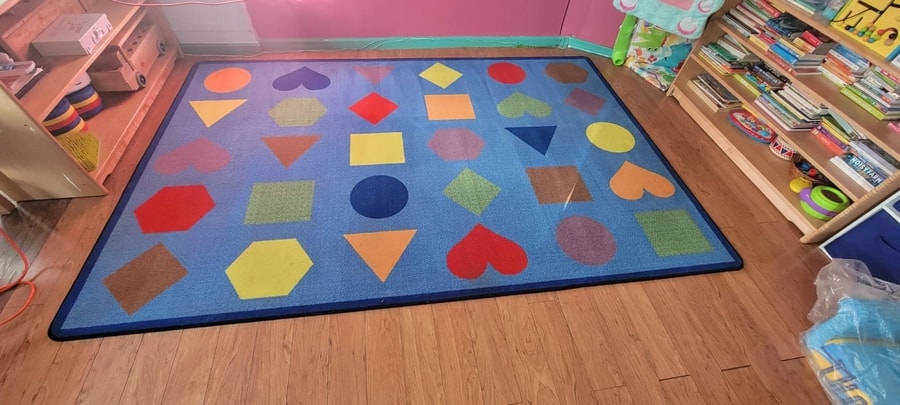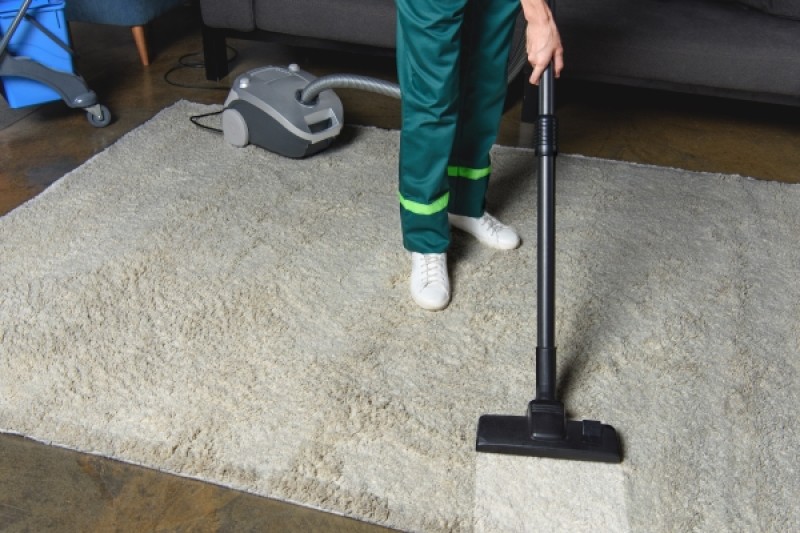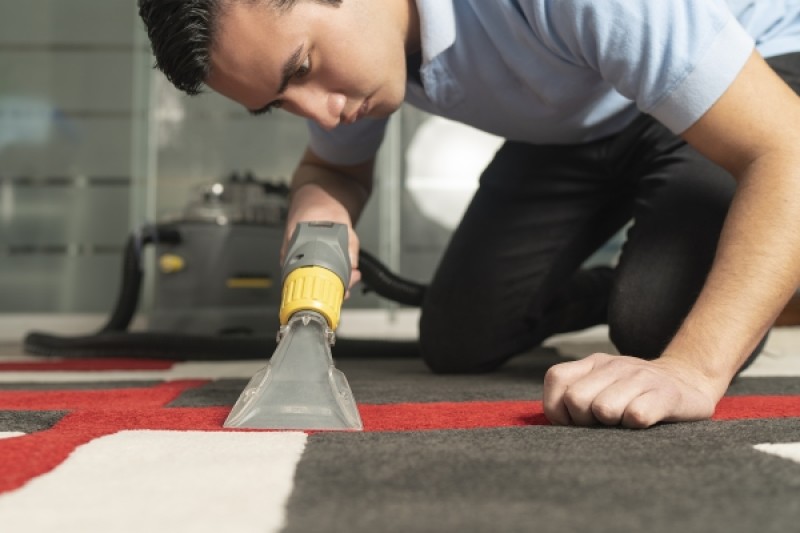Carpets are a popular choice for flooring in many homes, providing warmth, comfort, and style. Some of the most beautiful carpets on the market are made of silk, known for its softness and luxurious shine. Unfortunately, silk carpets may not fit everyone’s budget, leading some consumers to opt for buying the more affordable “artificial” silk carpet, commonly made from viscose. However, keeping carpets clean can be a constant struggle, especially when it comes to certain materials.
Despite its soft and luxurious appearance, viscose can be a nightmare for those attempting trying to maintain clean carpets. In this article, we wіll explore the reasons why viscose is a carpet cleaner's nightmare and why it may not be the best choice for your home. By understanding the properties of this material, you can make an informed decision when it comes to purchasing carpets for your living space.
Understanding the Delicate Nature of Viscose Fibers
Viscose carpets are crafted of natural plant-derived fiber obtained from cellulose. The prevalent fiber choice is viscose rayon but it can be produced using lyocell, tencel, faux silk, artificial silk, and other materials. Regrettably, viscose carpets pose a considerable challenge for professional carpet cleaners’ earning them the moniker “worst nightmare”. ” They are referred to as the “sausage of the fiber” because one may not want to discover how they are made, and their exact composition is uncertain.
The rayon manufacturing process involves using toxic chemicals that pollute the environment. This is why rayon production is banned in the US and has shifted to China and India. Rayon is toxic for consumers as well since it emits substances that can cause headaches, nausea, chest pain, insomnia, and vomiting. If you’re aiming for an eco-friendly carpet, viscose might not be the best choice. Additionally, if you appreciate the stain-free clean look of your carpet, or if you own pets or children, buying a viscose carpet can be a significant source of stress for you.
The Challenges of Cleaning Viscose Carpets
Yellowing
If you accidentally spill a glass of water on your viscose carpet, this will result in a yellow stain that is impossible to get rid of! This is because the carpet’s material is derived from cellulose. When cellulose chemically reacts with water, it produces a yellow color. Any amount of moisture or humidity can turn viscose yellow or brown. It’s only chemistry, and professional carpet cleaners can do nothing about it.
That’s why if you decide to buy a viscose carpet, you should forget about steam cleaning your rug. You should also avoid using water-based carpet cleaning solutions, as even the smallest amount of water can ruin viscose carpets. Steam cleaning is the best option for cleaning pet stains and odors. Pet stains can harbor bacteria, allergens, and dirt. Getting a new puppy might even mean accidents in the house. Having an extremely hard-to-clean viscose rug means that you might have dog urine in the fibers, which can be tricky to get rid of.
Bleeding and Fading
Rayon doesn’t hold dye and over time it bleeds. That’s why it can be challenging for cleaners to safely clean carpet without ruining them. Every time you clean the rug, you will remove some of its dye. So, you’re left with the choice of having a rug a few shades lighter or a dirty one. In case you decide to call a rug cleaner, remind them to conduct a dye test beforehand.
Shedding
Since we are always walking around our rooms, it makes sense that our rugs should be able to endure being stepped on. However, this is simply not the case with viscose carpets. Viscose is a very weak fiber, and it easily breaks and sheds. Just walking on it and regular vacuuming leaves it looking shaggy and old. This is why viscose carpets are often referred to as “disposable”. Scrubbing them can make them resemble a cat scratching post. They are not recommended for placement in high-traffic areas, so it’s best to not use them as decorations in living rooms.
If you have a baby, it’s best to keep it away from the carpet, as it has tiny broken fiber hair on top that your baby might accidentally ingest. Strength tests of various fiber types have shown that wool fibers can withstand bending up to 10,000 times without breaking. Silk fibers can endure bending up to 2000 times before breaking, whereas viscose fibers break after only 70 bends! If you want your rug to last longer than a month, it’s advisable to avoid purchasing viscose or to use it solely as a decorative wall hanging.
Stiffening
Even though viscose carpets are made to imitate silk, and when you buy them, they are soft like silk, this softness does not last. Rug cleaning makes them look blotchy and flat very quickly. Vacuuming causes damage that might be irreparable. This can cause huge disappointment for consumers since their rug, which they expected to be pleasant to the touch and soft like silk, turns into cardboard.
Bad Insulation
Viscose carpets do not trap heat and are not suitable for winter. This can be a downside if you want to lie on a warm carpet.
Overpriced
Viscose carpets are overpriced for their value. Despite being cheaper than silk, they are more expensive than wool rugs. When you take into account their short lifespan and the potential need to purchase a new one after a few months, you end up spending more money than you initially anticipated.
They are Hard to Clean and Maintain
Viscose carpets are inherently the hardest carpets to clean and maintain, even for professional carpet cleaners. That’s why the cost of cleaning them exceeds that of wool or silk carpets. Additionally, , viscose carpets require professional carpet cleaning at least once a year, contributing to their overall expensive maintenance
If you’re still contemplating the purchase of a viscose carpet, even after assimilating this information, we have some advice on how you can clean and maintain it. It is crucial to maintain realistic expectations and bear in mind that some of the damage to the carpet may be irreparable and it won’t regain the appearance it had on the initial day of purchase.
One of the most important things you can do is apply a carpet protector treatment. Since the fibers lose 50% of their strength if they come into contact with water, anything that can minimize moisture from getting into them will keep the carpet looking better for a longer time. You can use specialized carpet shampoo designed for use on rayon fibers. When using detergents, avoid using bleach or water-based carpet cleaning solutions and stick to acid-based detergents. You can also utilize upholstery tools.
Remember to clean the backside of the rug, as it accumulates dirt and crumbs. You can minimize the need for carpet cleaning by placing it in a low-traffic area. Avoid scrubbing and carefully vacuum every three or four weeks. This process can be lengthy and frustrating for you, and due to the vulnerability of the fiber, you might inadvertently cause more damage and leave it looking worse than before. That’s why we recommend reaching out to your professional carpet cleaner service to treat your viscose carpet.
How To Clean a Viscose Carpet at Home?
Viscose rugs have wood cellulose fibers that can easily soak water, so you must be careful when cleaning them. These tips show you how to clean a viscose area carpet and keep it in good shape:
Clean Up Spills As You Notice Them
Moistness can shrink or yellow the fibers. Try not to drink or prepare food near your new viscose carpet to prevent damage. It would be better if you didn’t place your viscose carpet in areas prone to humidity or spills, like the kitchen or the dining room.
Vacuum with a Proper Cleaner
Since viscose carpets shed, it helps to vacuum them at least once a week to prevent the rug from shedding, especially if it’s in a space with heavy foot traffic. Viscose carpet cleaning with a proper viscose and wool carpet vacuum cleaner or a canister type with a powerhead can effectively eliminate soil and dirt particles before they spoil the fibers. Avoid using a carpet beater bar on your viscose carpet to control excessive fuzzing.
Clean the Underside
When vacuuming your viscose area carpet, you might want to cleanse the back since it accumulates dirt, crumbs, and dust.
This is our Advice
Our best advice for you is to save your money and time and avoid buying a viscose carpet altogether. Viscose is the worst material on the market when it comes to cleaning and we believe you can make a better choice. Consider buying another material if you want to own a clean, fresh, and durable carpet that will leave you feeling satisfied.
In conclusion, choosing viscose carpets poses a myriad of challenges for homeowners and becomes a true nightmare for carpet cleaners. The material's susceptibility to moisture and delicate nature make maintenance a formidable task. To save yourself from the hassle, opt for a smarter choice in carpet materials. Explore alternatives that offer durability and ease of cleaning. For professional and hassle-free upholstery and carpet cleaning services, trust PristineGreen. Mаke the wise decision today for a cleaner, long-lasting carpet experience.
Frequently Asked Questions
Despite being cheaper than silk, they are more expensive than wool rugs. When you take into account their short lifespan and the potential need to purchase a new one after a few months, you end up spending more money than you initially anticipated.
If you accidentally spill a glass of water on your viscose carpet, this will result in a yellow stain that is impossible to get rid of! This is because the carpet’s material is derived from cellulose. When cellulose chemically reacts with water, it produces a yellow color.
They are not recommended for placement in high-traffic areas, so it’s best to not use them as decorations in living rooms.
The rayon manufacturing process involves using toxic chemicals that pollute the environment. This is why rayon production is banned in the US and has shifted to China and India.
Viscose carpets do not trap heat and are not suitable for winter. This can be a downside if you want to lie on a warm carpet.
You can minimize the need for carpet cleaning by placing it in a low-traffic area. Avoid scrubbing and carefully vacuum every three or four weeks.
Vacuuming causes damage that might be irreparable. This can cause huge disappointment for consumers since their rug, which they expected to be pleasant to the touch and soft like silk, turns into cardboard.
When using detergents, avoid using bleach or water-based carpet cleaning solutions and stick to acid-based detergents.
They are referred to as the “sausage of the fiber” because one may not want to discover how they are made, and their exact composition is uncertain.
Since we are always walking around our rooms, it makes sense that our rugs should be able to endure being stepped on. However, this is simply not the case with viscose carpets. Viscose is a very weak fiber, and it easily breaks and sheds.




